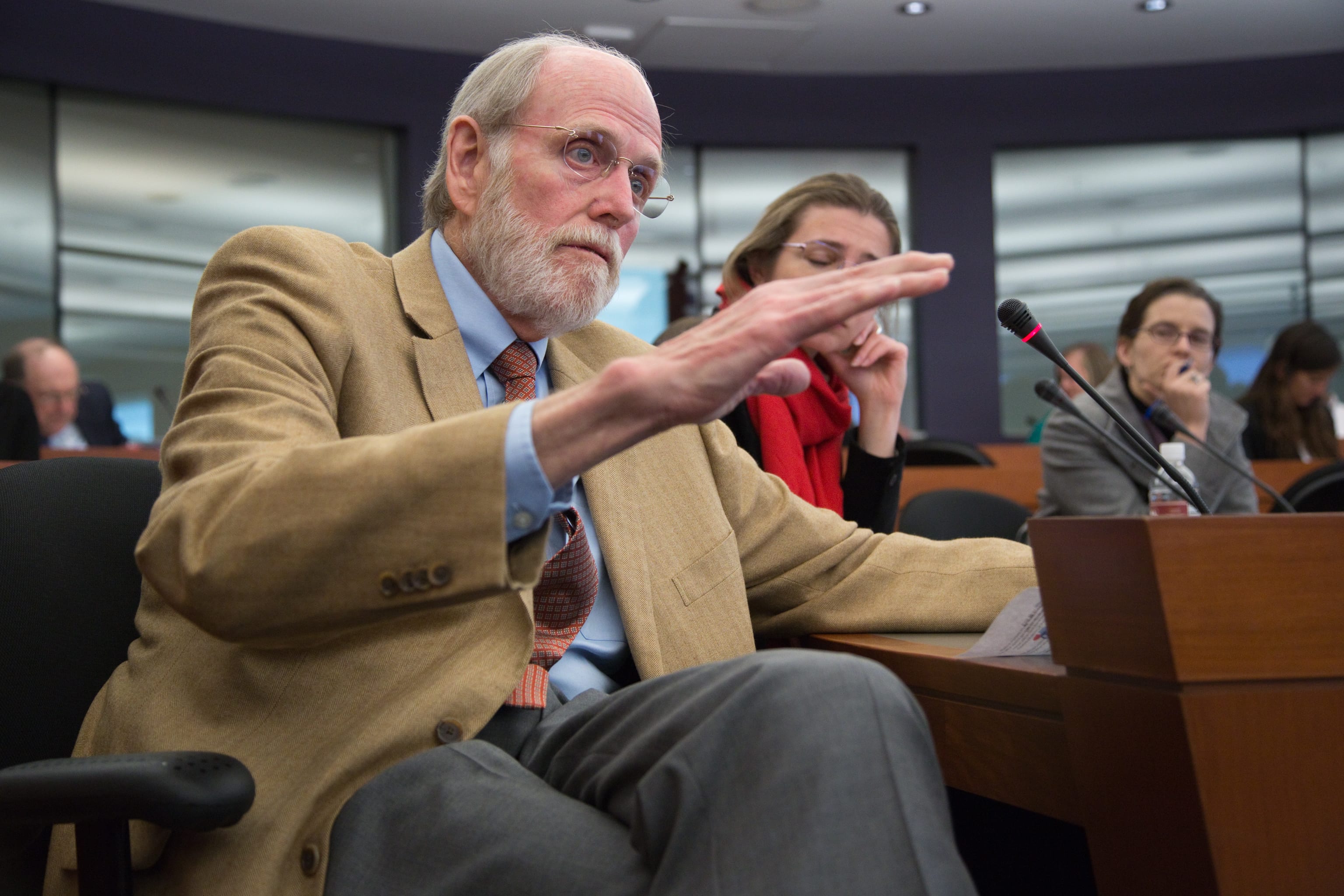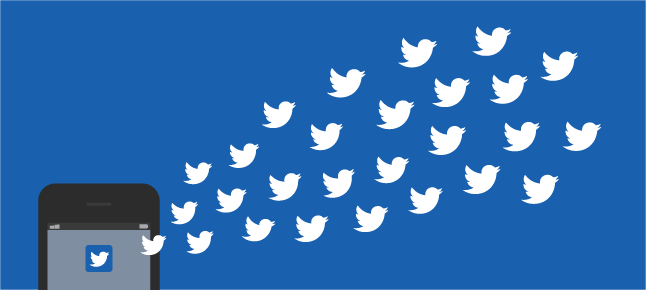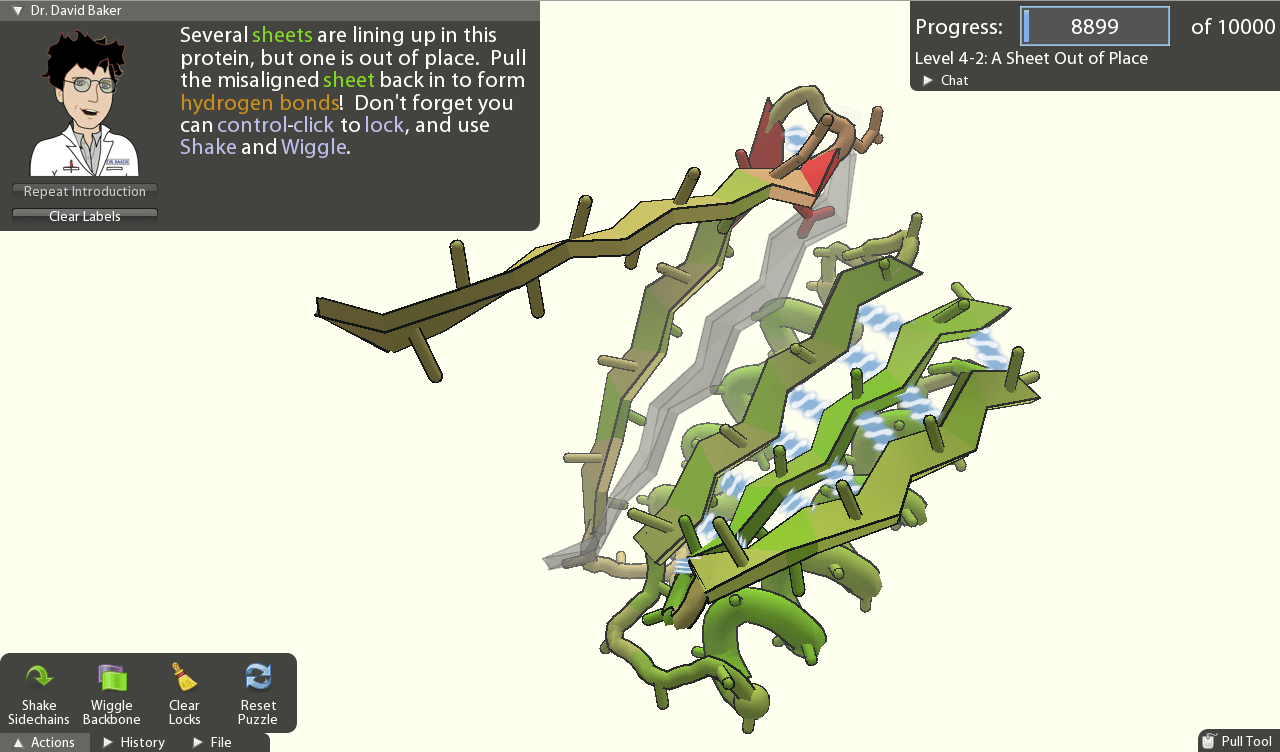 GW School of Media and Public Affairs Adjunct Assistant Professor Bruce Gregory compiles an annotated bibliography of Public Diplomacy-related readings and other resources. Intended for teachers of public diplomacy and related courses, here is an update on resources that may be of general interest. Suggestions for future updates are welcome and should be directed to Bruce Gregory at BGregory@gwu.edu.
GW School of Media and Public Affairs Adjunct Assistant Professor Bruce Gregory compiles an annotated bibliography of Public Diplomacy-related readings and other resources. Intended for teachers of public diplomacy and related courses, here is an update on resources that may be of general interest. Suggestions for future updates are welcome and should be directed to Bruce Gregory at BGregory@gwu.edu.
Read the full archive for Bruce Gregory’s Public Diplomacy Resources.
“Amb. Ryan Crocker in Conversation with NPR’s Steve Inskeep,” 2012 Annual Banquet Keynote Address, Middle East Institute, November 13, 2012. Inskeep, the host of National Public Radio’s Morning Edition, interviews retired US Ambassador Ryan Crocker. In discussing a range of issues relating to Afghanistan and the attack on the US consulate in Benghazi, Libya, Crocker offers considered views on lessons from the death of US Ambassador Chris Stevens. “One of the lessons I hope we don’t think we learned is let’s retrench, let’s have fewer engagements, let’s go out less, let’s do less, let’s know less. . . we have to be prepared to go to dangerous places, do difficult things. That’s what Chris Stevens was doing to understand and influence the new ascendancy in Libya. If you don’t deal with them, you’re not going to affect their behavior or even know what their agenda is.” Visit link for a six minute NPR audio feed on diplomacy risk issues.
American Academy of Diplomacy and The Stimson Center, Diplomacy in a Time of Scarcity,October 2012. This report, written from a Foreign Service perspective, evaluates “important, if uneven, progress” in staffing the US State Department (up 17 percent) and USAID (up 30 percent) since 2008. It makes resource and personnel recommendations for the 2014-2018 State and USAID budgets based on four assumptions: a “transition trap” driven by increased requirements and reduced resources, a US that should remain “fully engaged” worldwide, equal support for key elements of military and civilian power, and cuts in programs, not people, if choices are necessary. In a brief section that ambiguously treats public diplomacy separately from “core diplomacy,” but as “a core mission of the State Department,” public diplomacy is seen to have fallen short of its goals in personnel, academic exchanges, and creation of American cultural centers.
Broadcasting Board of Governors (BBG), “BBG Global Audience Estimate from the FY 2012 Performance and Results Report,”November 14, 2012. Weekly unduplicated worldwide audiences for US government-funded broadcasting services totaled 175 million in 2012 — down from 187 million in 2011 — according to the government agency responsible for both managing and evaluating US international broadcasting. Audiences increased substantially in Iran and declined in Indonesia, Egypt, Nigeria, and Burma as their broadcasting markets became more open.
Manuel Castells, Networks of Outrage and Hope: Social Movements in the Internet Age, Polity, 2012. Networked society scholar Castells (University of Southern California) uses theories of power relationships developed in his book Communication Power (2009) to analyze new social movements characterized by their self-organization, distrust of political parties and traditional mass media, and reliance on the Internet and local assemblies. His research focuses on the Arab revolutions in Tunisia and Egypt, the Indignadasmovement in Spain, and the Occupy Wall Street movement in the United States.
Nicholas J. Cull, The Decline and Fall of the United States Information Agency: American Public Diplomacy, 1999-2001, Palgrave Macmillan, 2012. In his comprehensive and deeply researched earlier book, The Cold War and the United States Information Agency: American Propaganda and Public Diplomacy, 1945-1989, (2008), Cull (University of Southern California) took the story of USIA from its origins to the end of the Cold War. His new book, a much slimmer volume, continues the narrative characterized as a downhill trajectory to USIA’s consolidation in the Department of State in 1999 and a crisis in public diplomacy in the months leading up to 9/11. He divides his account into three chronological chapters linked to the administrations of Presidents George H. W. Bush and Bill Clinton. Throughout, he examines four broad themes: (1) political and structural issues in the road to consolidation, (2) the extent to which USIA continued its core work, (3) the extent to which USIA adapted to new technologies and approaches to public diplomacy, and (4) indications of the neglect of public opinion prior to 9/11.
Fergus Hanson, “Baked In and Wired: eDiplomacy@State,” Policy Paper Number 30, Brookings, October 2012. Hanson (Brookings nonresident Fellow, formerly Lowy Institute for International Policy, Australia) builds on his earlier paper Revolution@State (March 2012). Using new anecdotes and recent data, Hanson focuses on three of eight categories in the US State Department’s uses of social media: public diplomacy, Internet freedom, and knowledge management. Although brimming with enthusiasm for State’s vanguard role, his paper includes views of critics and assessments of areas for improvement in what is now “a core tool of diplomacy.”
Brian Hocking, Jan Melissen, Shaun Riordan, and Paul Sharp, “Futures for Diplomacy: Integrative Diplomacy for the 21st Century,”Clingendael, Netherlands Institute of International Relations, Report No. 1, October 2012. Four leading diplomacy scholars associated with Clingendael and The Hague Journal of Diplomacy take a fresh and comprehensive look at “the puzzles surrounding, and challenges confronting, contemporary diplomacy.” Their goal is to go beyond familiar arguments regarding the state of diplomacy — e.g., multiple stakeholders, managing networks, and the centrality of public diplomacy — “to consider what kind of overall image of diplomacy in the early 21st century they present and their implications for its future development.” The paper offers a framework of “integrative diplomacy” in which foreign ministries act in national diplomatic systems and diplomats “increasingly function as facilitators and social entrepreneurs.” Scholars and practitioners will find this a useful and provocative conceptual framework for ongoing conversations.
Ellen Huijgh, ed., “The Domestic Dimension of Public Diplomacy,” The Hague Journal of Diplomacy, Vol. 7, No. 4, 2012. The authors in this special edition of HJD provide significant reinforcement to the view that a blended domestic and international approach to diplomacy’s public dimension is an essential element in study and practice. Their articles, grounded in analysis of evolving concepts and case studies, look at domestic publics as targets of governments, partners with governments, and independent public diplomacy actors. They usefully frame current debates and provide a platform for further research. Includes:
— Ellen Huijgh (University of Antwerp, Netherlands Institute of International Relations, Clingendael), “Public Diplomacy in Flux: Introducing the Domestic Dimension”
— Steven Curtis (London Metropolitan University) and Caroline Jaine (The CAST Institute, Cambridge), “Public Diplomacy at Home in the UK: Engaging Diasporas and Preventing Terrorism”
— Ellen Huijgh and Caitlin Byrne (Bond University), “Opening the Windows on Diplomacy: A Comparison of the Domestic Dimension of Public Diplomacy in Canada and Australia”
— Kathy R. Fitzpatrick (Quinnipiac University), “Defining Strategic Publics in a Networked World: Public Diplomacy’s Challenge at Home and Abroad”
— Teresa La Porte (University of Navarra), “The Impact of ‘Intermestic’ Non-State Actors on the Conceptual Framework of Public Diplomacy”
— Yiwei Wang (Tongji University), “Domestic Constraints on the Rise of Chinese Public Diplomacy”
— Shay Attias (Ministry of Public Diplomacy and Diaspora Affairs, Jerusalem), “Israel’s New Peer-to-Peer Diplomacy”
— Mladen Andrlic (Diplomatic Academy, Croatia), Iva Tarle (Embassy of Croatia, Jakarta), and Suzana Simichen Sopta (Embassy of Croatia, Kuala Lumpur), “Public Diplomacy in Croatia: Sharing NATO and EU Values with the Domestic Public”
“Innovations in Public Diplomacy,” PD Magazine, USC Center for Public Diplomacy, Issue 8, Summer 2012. Essays in this collection focus on a range of cutting edge questions and issues. Who is a diplomatic actor? European Union public diplomacy. Sub-state public diplomacy. Cultural diplomacy. Sports diplomacy. Digital technologies. And more. Includes:
— Paul Levinson (Fordham University), “Everyone is a Diplomat in the Digital Age.”
— Mia’a K. Davis Cross (University of Southern California), “Europe as a Security Actor.”
— Ellen Huijgh (University of Antwerp and Netherlands Institute of International Relations, Clingendael), “The Future of Sub-state Public Diplomacy.”
— Steffan Bay Rasmussen (University of the Basque Country), “Current Challenges to European Union Public Diplomacy.”
— Ali Fisher (InterMedia), “Everybody’s Getting Hooked Up: Building Innovative Strategies in the Age of Big Data.”
— Martha Alhassen (University of Southern California), “Remarkable Current: Music as Public Diplomacy.”
— Geoffrey Pigman (University of Pretoria), “‘Crouch, Touch, Pause, Engage,’ Moving Forward in the Scrum of International Sport and Public Diplomacy.”
Institute of International Education, Open Doors Report 2012, November 12, 2012. The lead finding in this year’s Open Doors Report is that international students in the US increased by six percent and US students studying abroad increased by one percent. This comprehensive report is published annually with funding from the US Department of State. In its press release, IIE emphasized that international exchanges contributed $22.7 billion to the US economy and that international education “creates a positive economic and social impact for communities in the United States and around the world.” Open Doors data and “fast facts” are available on IIE’s website.
Iskra Kirova, Public Diplomacy and Conflict Resolution: Russia, Georgia and the EU in Abkazia and South Ossetia, CPD Perspectives on Public Diplomacy, USC Center on Public Diplomacy, Paper No. 7, Fall 2012. Kirova (CPD Research Fellow) analyzes public diplomacy and soft power strategies used by key actors in Russia’s “near abroad.” Her study provides a descriptive overview of Russia’s hard and soft power influence in the region and offers a prescriptive analysis of the EU’s and Georgia’s public diplomacy strategies for conflict resolution. Kirova focuses on the relevance of social, cultural, linguistic affiliations and draws conclusions from her cases for a broader understanding of public diplomacy.
Frank Lavin, “Enemies at the Gates: Security Lessons from a Foiled Embassy Attack,” Foreign Affairs, November 29, 2012. In the context of the attack on the US mission in Benghazi, Libya, former US Ambassador to Singapore Lavin draws lessons from a foiled terrorist attack on the US embassy in Singapore in 2001.
George E. Little, “Communication Synchronization — A Local Coordination Process,” Memorandum for Commanders of the Combatant Commands from the Assistant to the Secretary of Defense for Public Affairs, November 28, 2012. In this one-page memorandum, the Assistant Secretary explains his decision to replace the term “strategic communication” with “communication synchronization.” For comments on the memo see P.J. Crowley, “The Pentagon Drops Strategic Communication: Behind the Name Change,” Take Five, The IPDGC Blog on Public Diplomacy and Global Communication, December 4, 2012; Rosa Brooks, “Confessions of a Strategic Communicator,”Foreign Policy National Security Blog, December 6, 2012; and Tom Vanden Brook, “Pentagon Drops ‘Strategic Communication,'” USA Today, December 3, 2012.
Michael J. Mazarr, “The Risks of Ignoring Strategic Insolvency,” The Washington Quarterly, Vol. 35, No. 4, Fall 2012, 7-17. Mazarr (US National War College) argues the US strategic posture is becoming unsustainable due to a fundamental disconnect between means and ends – and “because it presumes an American relationship with friends, allies, and rivals that is the hallmark of a bygone era.” Mazarr urges a dramatic strategic shift guided by three principles: (1) strengthened economic, educational, and energy sectors at home, (2) a substantially reduced military establishment with less forward deployment and a combination of cyber and other emerging capabilities, and (3) increased investment in knowledge of complex issues and trends coupled with diplomatic efforts to share leadership burdens with others.
National Intelligence Council (NIC), Global Trends 2030: Alternative Worlds, December 2012. In its latest quadrennial report, the NIC uses a variety of analytical tools to identify “relative certainties” and “potential game changers” in its long-term projection of global trends. The report includes studies of potential scenarios. Its attractive design and online presentation make it an effective teaching tool. Public diplomacy scholars and practitioners will find useful its discussion of individual empowerment, increased power of non-state actors, new technologies, demographic trends, governance deficits, problems created by rapid urbanization and climate change, and nuanced discussion of the potential for US leadership. In addition to its full report, the NIC provides a useful online summary.
Lynne Olson, Citizens of London: The Americans Who Stood with Britain in its Darkest, Finest Hour,Random House, 2010. In this well-researched book, historian Lynne Olson chronicles the World War II relationship between Britain and the US through the eyes of CBS News London Bureau Chief Edward R. Murrow and two American diplomats, US Ambassador to Britain John Gilbert Winant and Lend Lease Administrator Averell Harriman. Part personal relationships, part public diplomacy, part biography, Olson’s story is about a fractious and ultimately successful alliance with contrasting needs and perceptions on both sides. Particularly useful is her account of Americans assuming a larger role in the world but who, in the words of one British worker, “needed to know more about the world before they could lead it.” (Courtesy of Jim Whittemore)
James Pamment, New Public Diplomacy in the 21st Century: A Comparative Study of Policy and Practice, Routledge, 2012. Pamment (Karlstad University / Uppsala University) explores the meaning of “new public diplomacy” viewed as a paradigm shift in which globalization, new media, and multiple new international actors challenge traditional foreign ministry structures and diplomacy strategies. His book combines in-depth conceptual analysis with empirical data from three country case studies (United States, United Kingdom, and Sweden). Pamment draws extensively on interviews with practitioners in each country and a growing research consensus that distinguishes between old and new public diplomacy. His goals: (1) “to explore and challenge some of the accepted boundaries of PD theory as it has developed over the past decade,” and (2) “to introduce both the scholarly debate and foreign ministry practices surrounding the new public diplomacy.”
Inderjeet Parmar, Foundations of the American Century: The Ford, Carnegie & Rockefeller Foundations in the Rise of American Power,Columbia University Press, 2012. Parmar (University of Manchester) provides a deeply researched account of ways in which philanthropic foundations created cultural and intellectual networks that supported the projection of American power from the 1920s to the 21st century. The principal achievement of American foundations, Parmar argues, has been the construction of global networks linking universities, think tanks, corporate actors and policymakers. His book contains a thorough discussion of its conceptual grounding in a Gramscian analysis of power and a number of detailed case studies. These include the Salzburg Seminar and the Cold War’s American studies network, Nigeria and the African studies network, Indonesia and the Asian studies network, and Chile and the Latin American studies network.
Pew Research Center for the People and the Press, In Changing News Landscape, Even Television is Vulnerable: Trends in News Consumption: 1991-2012, September 27, 2012. Pew’s survey finds television may be losing its hold on a successor generation now getting more of its news on social networking sites, cell phones, tablets, and other mobile platforms. The report shows also digital news surpassing radio, newspapers, and magazines. Book readers show no decrease, but a growing number use electronic and audio devices.
“Soft Power, Smart Power and Public Diplomacy in Asia,” Global Asia, A Journal of the East Asia Foundation, Volume 7, Number 3, Fall 2012. Articles in this edition of Global Asia examine ways in which Asian countries and Asia as a region are “deeply engaged in the projection of soft power” — and how they are adopting and adapting soft power and public diplomacy concepts and terms. (Courtesy of Ellen Frost)
Includes:
— Nicholas J. Cull (University of Southern California), “Listening for the Hoof Beats: Implications of the Rise of Soft Power and Public Diplomacy”
— Keith Dinnie (NHTV Breda University of Applied Sciences, The Netherlands), “More Than Tourism: The Challenges of Nation Branding in Asia”
— Zhou Qingan and Mo Jinwei (Tsinghua University), “How 21st Century China Sees Public Diplomacy as a Path to Soft Power”
— Kazuo Ogoura, (Head of Tokyo’s Olympic Bid Committee, former President of the Japan Foundation), “From Ikebana to Manga and Beyond: Japan’s Cultural and Public Diplomacy is Evolving”
— Yul Sohn (Yonsei University), “‘Middle Powers’ Like South Korea Can’t Do Without Soft Power and Network Power”
— Wu-suk Cho, “Riding the Korean Wave From ‘Gangnam Style’ to Global Recognition”
— Alison Broinowski (Australian National University), “Soft Power, Smart Power or Public Diplomacy? Australia Fumbles”
Tara Sonenshine, “Measuring the Public Diplomacy of the Future,” Remarks at the Heritage Foundation, December 3, 2012. The Under Secretary of State for Public Diplomacy and Public Affairs talks about the underlying purposes of public diplomacy and the Department’s policy guidelines on planning, managing, and conducting evaluations.
US Department of Education, Succeeding Globally Through International Education and Engagement, US Department of Education International Strategy 2012-16, November 2012. In its “first-ever fully articulated international strategy,” the Department advances two strategic goals: strengthen US education and advance US international priorities. The strategy assumes traditional reading, writing, mathematics and science skills are no longer sufficient. Rather, “an effective domestic education agenda must address global needs and trends and aim to develop a globally competent citizenry.” The strategy discusses integrated and coordinated activities and programs intended to achieve three objectives: (1) increase global competencies, (2) learn from others, and (3) engage in education diplomacy.
Peter van Ham, “Two Cheers for Public Diplomacy and Place Branding,” e-International Relations,September 2, 2012. In this brief online article, posted by the e-International website for students of international politics, Peter van Ham (Netherlands Institute of International Relations, Clingendael) compares overlapping concepts, methods, and goals of public diplomacy and place branding. They “are putting traditional diplomacy to the test,” he argues. However, “these newer forms of diplomacy should not be considered harbingers of a mediatized global democracy.” Hence, only two cheers.
Stephen Walt, “Music hath charms . . . but we don’t use it (updated),” Foreign Policy Blog, December 6, 2012. FP blogger Walt laments the death of jazz legend Dave Brubeck, reflects on his impact as an American cultural ambassador, and observes the US is not using “A-list musicians” in today’s cultural diplomacy. His blog includes a response from Hishaam Aidi (Columbia University and the Open Society Institute), “Leveraging Hip Hop in US Foreign Policy,” critical of current State Department efforts to progam hip-hop and rap artists.
Matthew C. Weed, U.S. Public Diplomacy: Legislative Proposals to Amend Prohibitions on Disseminating Materials to Domestic Audiences, CRS Report for Congress R42754, Congressional Research Service, September 21, 2012. CRS analyst Weed succinctly and usefully analyzes legislation that prohibits the US government from influencing domestic public opinion through “unauthorized publicity or propaganda” and US public diplomacy. Weed’s report examines long-standing provisions of the “Smith-Mundt Act” and issues relating to pending bills that would remove the prohibition on domestic dissemination of “public diplomacy information” by the Department of State and the Broadcasting Board of Governors, “while maintaining the prohibition on using public diplomacy funds to influence U.S. public opinion.”
Robert F. Worth, “Can American Diplomacy Ever Come Out of Its Bunker,” New York Times Magazine, November 18, 2012. 32-35, 44. The magazine’s staff writer profiles the career and death in Benghazi, Libya of US diplomat Chris Steven and explores issues relating to fortress embassies and contrasting levels of tolerance for risk between Washington and diplomats. Includes views of former US ambassadors Ryan Crocker, Ronald Neumann, Prudence Bushnell, Richard Murphy, and Barbara Bodine. In Neumann’s view, “There’s less willingness among our political leaders to accept risks, and all that has driven us into the bunker.” For Bushnell, “The model has become, we will go to dangerous places and transform them, and we will do it from secure fortresses. And it doesn’t work.”
Gem from the Past
Mark Leonard, Catherine Stead, and Conrad Smewing, Public Diplomacy, London, The Foreign Policy Center, 2002. It has been a decade since the former director of “Tony Blair’s think tank” and his colleagues published this influential volume on the meaning and practice of public diplomacy. Drawing on research on public diplomacy practices in six countries, Leonard calls for “a new type of multilateral public diplomacy,” retooling embassy and foreign ministry structures, and infrastructures that link government and non-state actors across borders. Includes analysis of public diplomacy’s time dimensions, competitive and cooperative public diplomacy, “NGO diplomacy,” “diaspora diplomacy,” “political party diplomacy,” “brand diplomacy,” and “business diplomacy.”
Recent compilations of Public Diplomacy: Books, Articles, Websites are posted at Arizona State University’s COMOPS Journal, Matt Armstrong’s MountainRunner.us website, and George Washington University’s Institute for Public Diplomacy and Global Communication. For previous compilations of Public Diplomacy: Books, Articles, Websites, visit an archive created by the University of Southern California’s Center on Public Diplomacy.









